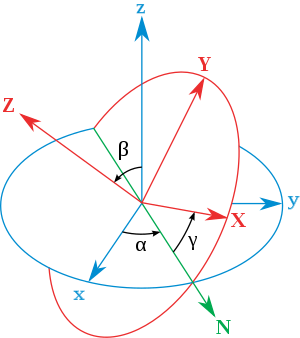Talk:Oriented matroid
| This article is rated C-class on Wikipedia's content assessment scale. It is of interest to the following WikiProjects: | |||||||||||||||||||||||||||||||||||||||||
| |||||||||||||||||||||||||||||||||||||||||
References
[edit]The article had only 2 sentences, and so should be a stub. Obviously, either reference is sufficient for everything stated in the article, even with its expansion to 3 sentences! Please remove the warning about references, which is just an unhelpful distraction (unlike a stub notice, which has a more constructive function). Thanks. Kiefer.Wolfowitz (talk) 23:48, 17 January 2010 (UTC)
- I hid the reference flag, for the convenience of my betters! Kiefer.Wolfowitz (talk) 23:50, 17 January 2010 (UTC)
Subdivisions
[edit]I introduced subdivisions, and expanded the content in optimization and geometry. (I suspect that this content makes this article of greater interest to the public, notwithstanding the appeal of real algebraic geometry, etc.) Kiefer.Wolfowitz (talk) 01:26, 18 January 2010 (UTC)
Graphics
[edit]This could be adapted to illustrate the duality, spherical models, etc. Kiefer.Wolfowitz (Discussion) 02:00, 23 March 2011 (UTC)

I didn't finish the revision. I'm sorry for leaving the last sections rough.
Not "obvious"
[edit]In Oriented matroid § Background, we find the following sentence:
- The empty signed set, is defined in the obvious way.
Sorry to say, it's not "obvious" how the empty set can have a partition into two (distinct) subsets, one the negative part and the other the positive part, of the empty signed set – since the empty set can have no subsets except itself. yoyo (talk) 05:04, 15 November 2017 (UTC)
- Why do you think that the subsets must be distinct from each other or from the whole set? All that is required is that they be disjoint and that their union is the whole set. The partition into the empty set and the empty set works. —David Eppstein (talk) 05:13, 15 November 2017 (UTC)
- How can two sets be disjoint if not distinct? For them to be disjoint, their intersection must be empty (which is trivially true of any set, including the empty set itself, with the empty set). A partition, however – according to the Wikipedia definition – must have non-empty parts. That implies that the empty set can not have any partition. That definition also explicitly precludes a partition from having any empty part:
- The family P does not contain the empty set ….
- Personally, I see nothing exceptionable about a definition of a partition of the empty set that allows it to comprise just one subset, namely itself. That would also require us to change the definition to say:
- Except when the set X is empty, the family P does not contain the empty set ….
- But it's not defined that way here.
- So, is Wikipedia's definition of partition wrong? (Actually, I think it is, since (a) it describes a partition variously as a "set of … subsets" and as "a family of sets" (the second making better sense); and (b) it implicitly disallows the empty set having any partitions, as mentioned above, yet offers the example of the empty set having exactly one partition!) yoyo (talk) 16:27, 16 November 2017 (UTC)
- Two sets are disjoint when their intersection is empty. The intersection of the empty set and the empty set is empty. Therefore, the empty set is disjoint from the empty set. As for the "partition of a set" link that you're looking at: the "nonempty parts" is part of the definition of a multi-way partition. It is not part of the usual definition of a two-way partition. Unfortunately I'm not sure we have an article on two-way partitions of sets. —David Eppstein (talk) 17:21, 16 November 2017 (UTC)
- I would modify David Eppstein's explanation as follows: A partition (into any number of subsets) always has nonempty sets. A bipartition always has two sets and they may be empty. I will modify the terminology to clear this up. Zaslav (talk) 05:17, 23 January 2024 (UTC)
- Two sets are disjoint when their intersection is empty. The intersection of the empty set and the empty set is empty. Therefore, the empty set is disjoint from the empty set. As for the "partition of a set" link that you're looking at: the "nonempty parts" is part of the definition of a multi-way partition. It is not part of the usual definition of a two-way partition. Unfortunately I'm not sure we have an article on two-way partitions of sets. —David Eppstein (talk) 17:21, 16 November 2017 (UTC)
- So, is Wikipedia's definition of partition wrong? (Actually, I think it is, since (a) it describes a partition variously as a "set of … subsets" and as "a family of sets" (the second making better sense); and (b) it implicitly disallows the empty set having any partitions, as mentioned above, yet offers the example of the empty set having exactly one partition!) yoyo (talk) 16:27, 16 November 2017 (UTC)






